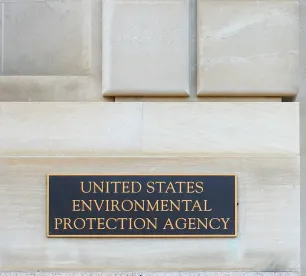An EPA Inspector General (IG) report issued on March 31 found that agency enforcement and compliance activity and resources have generally declined – substantially on certain measures – between Fiscal Year (FY) 2006 and FY 2018. (The EPA FY runs from Oct. 1 through Sept. 30.)
The report, “EPA’s Compliance Monitoring Activities, Enforcement Actions, and Enforcement Results Generally Declined from Fiscal Years 2006 Through 2018” (Report No. 20-P-013) (“Enforcement and Compliance Report”), comes on the heels of the EPA’s announcement on March 26, 2020, that it plans to exercise its discretion not to take enforcement actions against some regulated entities facing compliance struggles occasioned by the Coronavirus Disease (COVID-19) pandemic. See GT Alert, “U.S. Environmental Protection Agency Issues Enforcement Discretion Policy to Address Civil Noncompliance during the COVID-19 Pandemic” (March 27, 2020).
While the regulated community has welcomed the policy, some EPA officials, including Cynthia Giles, the former head of the EPA’s Office of Enforcement and Compliance Assurance, has criticized the pandemic enforcement discretion policy as overbroad and “essentially a nationwide waiver of environmental rules for the indefinite future.” Notwithstanding these differing viewpoints, a decline in enforcement under the pandemic enforcement discretion policy may further the declines identified in the Enforcement and Compliance Report.
Specifically, the IG found that, from FY 2007 to FY 2018:
-
inspections decreased 33%;
-
enforcement actions initiated and concluded decreased over 50%; and
-
enforcement actions with injunctive relief decreased 58%– with the lowest value of injunctive relief ($3.1 billion) obtained in FY 2018, a value more than 80% lower than the highest value of ($21 billion), obtained in FY 2011.
The observed declines in outcomes outpaced the declines in enforcement funding and staffing, which decreased by 18% and 21%, respectively, between FYs 2006 and 2018. Shrinking resources alone, thus, may not explain the shrinking compliance monitoring and enforcement numbers. The Enforcement and Compliance Report offers no rationale for the declines.
In the meantime, preliminary data from FY 2019 show the downward trend continuing for 11 of 15 compliance monitoring and enforcement measures. Two of the four outliers ticked up only slightly (the value of injunctive relief by 9%; the number of concluded cases with pollution reduction commitments by 3%), and one increased modestly (value of pollution reduction commitments by 19%). Total civil penalties, however, increased 400%, with more than 73% of that increase driven by resolution of a single case against an automaker.
The FY 2019 penalty data illustrate one of the difficulties of enforcement and compliance analysis: the data are, as statisticians say, “lumpy.” In any one year, an extreme case or set of conditions can skew the picture.
But looking back 12 years, as the IG did here, provided for identification of a trend – one of shrinking resources and declining enforcement and compliance outcomes. Having identified the trend, the IG Report may allow for a more factual discussion in this next political cycle and after.



 />i
/>i

